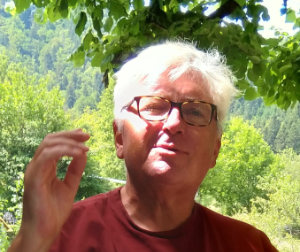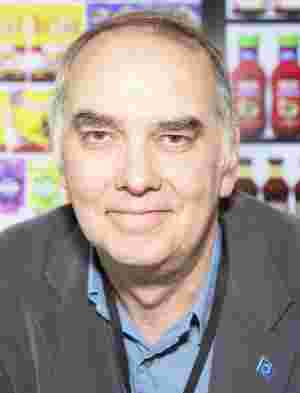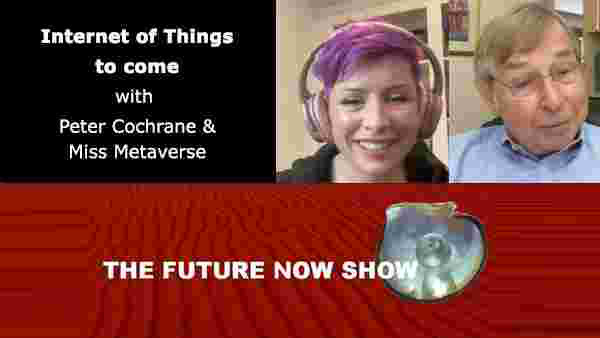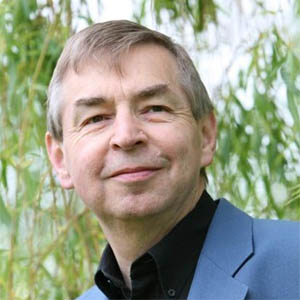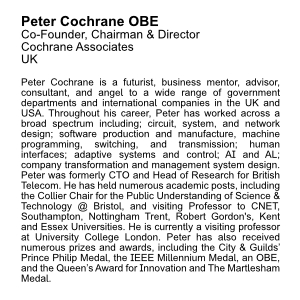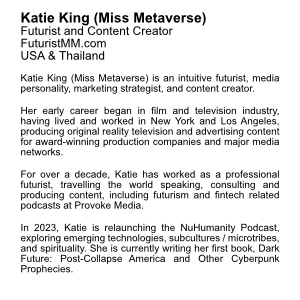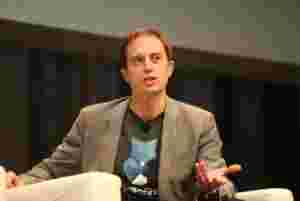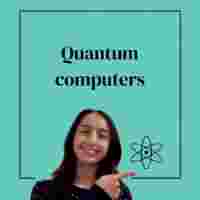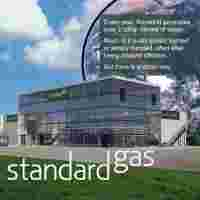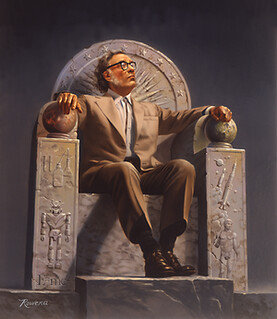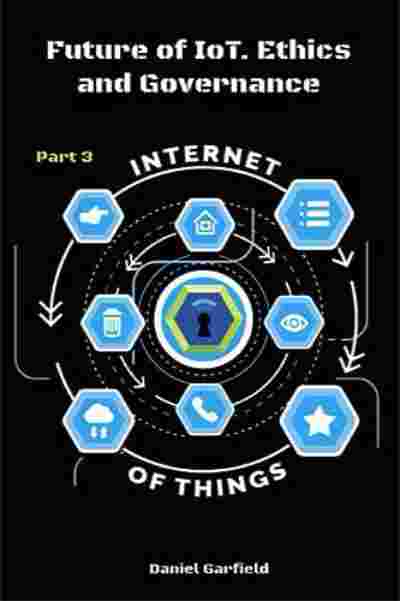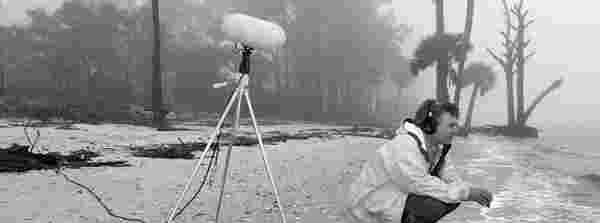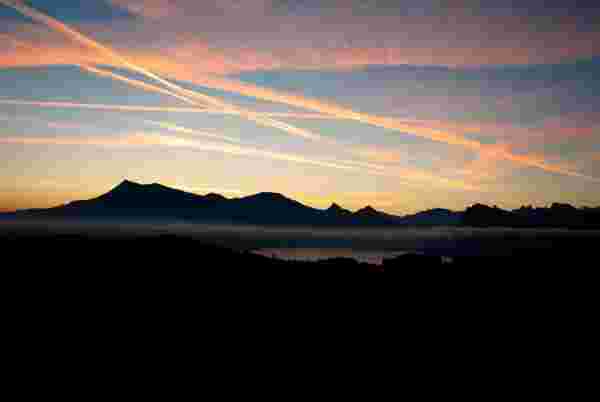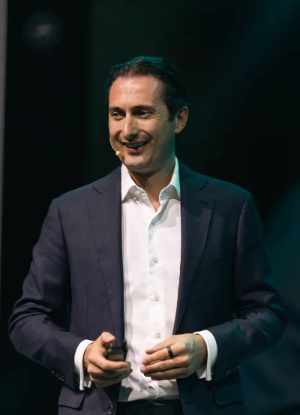Home
Journals Archive
Journals – Main Topics
Climate Change Success Stories
The Future Now Showsmobile versions and tablets are not supported
CONTENT
New Forms of Governance: The mobile phone should be in public hands
by Rob van KranenburgQR Codes powered by GS1
– discover endless business benefits and consumer engagement opportunities
by GS1IoT (Internet of Things) to come
with Peter Cochrane & Miss MetaverseCrypto: Why are we here? | Erik Voorhees Keynote | Permissionless II
by EmpireIsaac Asimov's Vision Of The Future
by LettermanInternet of Things (IoT): 3 in 1 Guide: Exploring the Advancements and Possibilities of Connected Devices
by Daniel GarfieldThe Wild Sanctuary
with Bernie Krause
Mark van Rijmenam
The Digital Speaker
Tags:
Artificial Intelligence, Barcode, Bill Gates,
Bitcoin, Carbon Reduction, China, Climate Change,
Cloud Seeding, Cryptocurrency, Dubai, EU,
Geoengineering, HAARP, Internet of Things,
IoT, Logistics, NASA, QR Code, Quantum Computing,
Science Fiction, Scientific Foresight, Soundscapes,
Supercomputer, UAE, UN, Weather Modification,
WEF, Wireless
Club of Amsterdam Search
Submit your article
Contact
Subscribe
Welcome
Felix B Bopp
Website statistics for
clubofamsterdam.com
October 2023:
this year visits:
last year
Quotes
Mark van Rijmenam: “Once we understand who we can be in the metaverse, we will discover what we can."
Isaac Asimov: "It is change, continuing change, inevitable change, that is the dominant factor in society today."
"Rob van Kranenburg: “... The next generation of pervasive ICT devices can play a unique role in stabilizing and balancing new societal structures. There is a need to disambiguate the productive functions in order to slow down, mediate and look for balance in the long, mid and short term with regard to bureaucracy and the democratic politics that could rendered ineffective in a ‘real-time’ world. ...”
Lead Article:
New Forms of Governance: The mobile phone should be in public hands
by Rob van Kranenburg
There are three main reasons:
Things are very simple. Organizations that depend on taxes it claims from citizens must own the means of governance to govern. Citizens will understand that instead of being captured in shareholder value, this system builds value for all in a democratic way. A broad societal debate about what kind of a smart society do we want can finally be an achievable goal. Tribes can be formed on the choice of settings. Local and national referenda on topical issues are easily scripted. As Tim Bouma, Director, Verification and Assessment Digital Governance Council, says: We need signed data that is portable between systems and meaningful across contexts. That’s about it.
This is a normal operation in a fundamental shift in the data – information – knowledge paradigm. When in 1452 the ability rose to print cheap books, the power structure built a huge infrastructure and only opened a public library in Den Haag in 1917. Schools, codex, universities, diplomas, books banned, to build notions of fact and fiction, truth, and falsehoods, legal and illegal. All this is man made and a response over centuries to gradually educate its population into the paradigm. This paradigm has run its course. The cost of not doing this is thus equally simple, the breakdown of the hegemonic glue that fed into the notion that common sense equals the paradigm. When this shifts you either need to have a new frame ready and move into that or you break down.
Economically: A new company is set up with the Dutch State owning 51%. All device holders are shareholders. Investors cannot be paid a dividend, but they have the first right to invest in new spin offs coming from the system. Taxes are paid automatically through VAT and a general fee.
Ethically: Embedding Self Sovereign ID and the Disposable ID framework. Accountability over anonymity is the key. When a contract with an energy company is signed it only needs to know that I can pay so I send that credential. That is all it needs to know.
Practically: By the age of 14 91% of children are in possession of a smartphone. At that age they receive the Team-phone which they will start to use gradually more than their commercial ones as the content is rich, the information hyperlocal (drawing from the full potential of Dutch administration, news, and friends) and special school functionalities.
Politically: Countries identify as zones of communication/taxation instead of relying on territory and kinetic borders.
This plan is doable with the tools around today. It is a new form of democratic governance.
The 21st century does not need politicians, parties or voters, just participants.

Rob van Kranenburg is the founder of Council and the ecosystem manager of the Horizon 2020 project, TagItSmart. He also chairs AC04 - IoT Hyper-connected Society of the European Research Cluster on the Internet of Things.
Article 01
QR Codes powered by GS1
– discover endless business benefits and consumer engagement opportunities
by GS1
Phil Archer of GS1 explains what is a QR Code, how it's structured and what's particularly a QR Code powered by GS1. How QR Codes powered by GS1 - with GS1 standards inside - benefit business and consumers by providing next level consumer engagement and next level operational efficiencies.
Phil Archer joined GS1 - the standards body behind the barcode - in July 2017 to bring an in-depth knowledge of the Web to the world of supply chains for retail, healthcare and more. Early projects include Mobile Ready Hero Images (product images optimised for display on small screens to users with zero attention span), expanding GS1's extension to the schema.org vocbaulary, and most fundamentally, GS1 Digital Link.That's the standard that embeds GS1 identifiers within Web URIs, making products first class citizens of the Web. These projects and more draw on his long experience at W3C, the industry standards body for the World Wide Web. While there, Phil coordinated W3C's work in the Semantic Web and related technologies. The role at GS1 is therefore an application of work done previously at W3C, making product data more accessible and maximising its potential for brand owners, manufacturers, retailers and consumers.
Notable previous projects include several best practice guidelines including Mobile Web Best Practices, Data on the Web Best Practices and its more specialised cousin, Spatial Data on the Web Best Practices. His key themes are interoperability through common terminology and URI persistence.
As well as work at GS1 and W3C, his career has encompassed online safety, broadcasting, teaching, linked data publishing, copy writing, and, perhaps incongruously, countryside conservation. The common thread throughout has been a knack for communication, particularly conveying complex technical ideas to a more general audience.
The Future Now Show
IoT (Internet of Things) to come
with Peter Cochrane & Miss Metaverse
Growth forecasts for The Internet of Things (IoT) currently span 30 – 60 Bn ‘Things’ by 2030. However, this ignores the central role of the IoT in realising sustainable societies where raw materials and component use has to see very high levels of reuse, repurposing and recycling. In such a world almost everything we poses and use will have to be tagged and be electronically addressable as a part of the IoT Such a need immediately sees the IoT grow to 2Tn or more over the span of Industry 4.0/5,0. In turn, demands new very-low energy wireless technologies operating over very short distance; a need that might be satisfied by ‘ Zero Infrastructure Mesh Networks’.
Moderator
Credits
Peter Cochrane
Professor of Sentient Systems, Consultant, Advisor, NED, Founder
Greater Ipswich Area, UK
petercochrane.com
Moderator
Katie (Miss Metaverse™) King
Futurist and Content Creator
Bangkok, Thailand & Cary, North Carolina, USA
missmetaverse.io
futuristmm.com
Felix B Bopp
Producer of The Future Now Show
clubofamsterdam.com
The Future Now Show
clubofamsterdam.com/the-future-now-show
You can find The Future Now Show also atLinkedIn: The Future Now Show Group
YouTube: The Future Now Show Channel
Article 02
Crypto: Why are we here? | Erik Voorhees Keynote | Permissionless II
by Empire
Erik Voorhees is the founder and CEO of the cryptocurrency exchange ShapeShift, an instant Bitcoin and altcoin exchange that he developed and managed under a penname until revealing his identity in 2015 via a seed fundraising announcement.
News about the Future
> Girls in Quantum
> Standard Gas Technologies
We are a group of students that wants to involve girls from around the world in the field of Quantum Computing.
We have already impacted girls and students from 21 countries, and we have girls ambassadors from Egypt, Pakistan, India, USA, Canada, Spain, Germany, UK and Chile.
SG100 technology – a carbon removing solution
Low-cost, and with a small footprint, our SG100 plant is designed to be scaled and deployed at speed to address the urgent need for sustainable, decarbonising energy as our Climate Change challenges accelerate.
Carbon Negative Energy: Each year, a single SG100 plant can generate up to 40,000 MW hours of carbon-negative power, enough for around 10,000 homes, offices or commercial properties, as well as for the transportation sector and wider industry.Carbon Reduction: One SG100 will remove up to 16,000 tonnes of CO2e – equivalent to the annual carbon emissions of 5,000 cars. With electrolysis, a plant processing biogenic waste will generate over 650 tonnes of green hydrogen. And the SG100 closes the waste management loop, offering a better low carbon alternative to landfill and incineration.
Carbon Capture: The SG100 technology also generates ‘biochar’ and ‘carbon char’, a black, granular, dust-like co- product that can be sequestered in valuable agricultural, environmental, and industrial applications.
Standard Gas Technologies doesn’t have all the answers, but we have some important contributions to make. Valuable carbon-removing energy options and products from wastes we can’t recycle for a start.
Article 03
Isaac Asimov's Vision Of The Future
by Letterman
The legendary science fiction writer shares his thoughts on the future of medicine, communications and more.
(From "The David Letterman Show," air date: 10/21/80)
Isaac Asimov was an American writer and professor of biochemistry at Boston University. During his lifetime, Asimov was considered one of the "Big Three" science fiction writers, along with Robert A. Heinlein and Arthur C. Clarke. A prolific writer, he wrote or edited more than 500 books. - Wikipedia
"Isaac Asimov bibliography" redirects here. For full lists, see Isaac Asimov bibliography (alphabetical), Isaac Asimov bibliography (categorical), Isaac Asimov bibliography (chronological), Isaac Asimov short stories bibliography, and Isaac Asimov book series bibliography.
Recommended Book
Internet Of Things (IoT): 3 in 1 Guide: Exploring the Advancements and Possibilities of Connected Devices
by Daniel Garfield
The Internet of Things (IoT) is revolutionizing the way we live and work, and this book is your ultimate guide to exploring the advancements and possibilities of connected devices. From smart homes to smart cities, IoT has the potential to transform every industry and aspect of our lives, and this book will take you on a journey through the technology that is shaping our future.In this book, you will discover the different categories of IoT devices and their applications in various industries, including agriculture, healthcare, transportation, energy management, and manufacturing. You will learn about IoT communication protocols and the technological advancements behind IoT. The book will also explore the security and privacy risks of IoT, as well as best practices for securing connected devices.
As you progress through the book, you will gain insights into emerging IoT trends and technologies, the impact of IoT on businesses and society, and IoT's role in the future of smart cities. You will also gain a deeper understanding of the ethical considerations and governance surrounding IoT.
Whether you are a student, a business professional, or simply interested in understanding the technology that is shaping our future, this book is the perfect guide to exploring the world of IoT. With its comprehensive coverage of IoT advancements and possibilities, this book is a must-read for anyone seeking to stay ahead of the curve in the fast-evolving world of technology.
Daniel Garfield
Co-Founder and Chief Open Source Officer, CodefreshI am a technology leader and full-stack engineer specialized in evangelizing containers, Kubernetes, Helm, Istio, and related technologies. As the Chief Technology Evangelist at Codefresh, I lead communication, marketing, and forward-thinking technology initiatives.
As an evangelist at Codefresh and Google Developer Expert, I've presented at Kubecon, Google Cloud Summit, DeveloperWeek, Meetups, and more. I build my own demos :)
Article 04
The Wild Sanctuary
with Bernie Krause
Since 1968, the Wild Sanctuary team has traveled the globe to record, archive, research, and express biophony™ – the voice of the natural world. These extremely rare wild soundscapes inform and enrich our specialized efforts from the field to public performance.
The Wild Sanctuary Audio Archive represents a vast and important collection of whole-habitat field recordings and precise metadata dating from the late 1960s. This unique bioacoustic resource contains marine and terrestrial soundscapes representing the voices of living organisms from larvae to large mammals and the numerous tropical, temperate and Arctic biomes from which they come. The catalog currently contains over 4,500 hours of wild soundscapes and in excess of 15,000 identified life forms.
Fully half of the natural soundscapes in this rare set are from habitats that no longer exist, are radically altered because of human endeavor, or have gone altogether silent.
GIANTS | Bernie Krause
by Moog Music Inc'GIANTS' is a platform for legendary electronic musicians and innovators to express themselves through the art of storytelling. This documentary series, filmed and produced by Moog Music, is about honoring and preserving the legacy of these artists and sharing their untold stories with the world.
This installment of 'GIANTS' focuses on one of the Moog modular synthesizer’s earliest advocates: soundscape ecologist and bio-acoustician Bernie Krause.
Once a Motown session guitarist intrigued by early advancements in the world of electronic music, the artist’s first Moog modular synthesizer encounter in 1965 led him to develop a new understanding of sound and musical expression. It was this understanding and early adoption of the instrument - co-owning one of the very first models - that helped Bernie and his musical partner Paul Beaver introduce the Moog synthesizer to the likes of George Harrison, The Monkees, The Byrds, and The Rolling Stones.
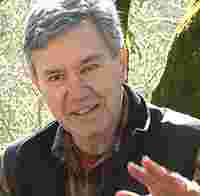
Bernie Krause
Since 1968, Bernie Krause has traveled the world recording and archiving the sounds of creatures and environments large and small. Working at the research sites of Jane Goodall (Gombe, Tanzania), Biruté Galdikas (Camp Leakey, Borneo), and Dian Fossey (Karisoke, Rwanda), he identified the concept of biophony™ based on the relationships of individual creatures to the total biological soundscape as each establishes frequency and/or temporal bandwidth within a given habitat. His contributions helped establish the foundation of a new bioacoustic discipline: soundscape ecology. Krause has produced over 50 natural soundscape CDs in addition to the design of interactive, non-redundant environmental sound sculptures for museums and other public spaces throughout the world. His installations can be experienced at the National Museum of Natural History (Smithsonian Institution, Washington, DC), the California Academy of Sciences (SF), the Houston Museum of Natural Science, the Chicago Science Museum, the American Museum of Natural History (NYC), five special commissions at the World Financial Center (NYC that performed October/November 2006) and over 30 other venues in N. America and Europe. During his life as a professional studio musician, Krause earned the Pete Seeger slot in the Weavers (1963), and with his late music partner, Paul Beaver, introduced the Moog synthesizer to pop music and film. The team’s work can be heard on over 250 albums and 135 feature films released between 1967 and 1980.Krause, who holds a PhD in Creative Arts with an internship in Bioacoustics, was a key figure in implementing natural soundscapes as a resource for the U. S. National Park Service and authored the educational soundscape manual for the agency that resulted in a recent book/CD, Wild Soundscapes: Discovering the Voice of Natural World (Wilderness Press, 2002). In 2006, under the auspices of US Fish & Wildlife, the Calgary Zoo, Google, Stanford, Harvard Universities, the University of Utah, and several other institutions, he led three teams to capture the first natural soundscape examples ever recorded in the Arctic National Wildlife Refuge. Until recently, he served on the board of Harvard’s Institute for Music and Brain Science.
Krause lives with his wife, Katherine (Kat) in Glen Ellen, California. His new book, The Great Animal Orchestra: Finding the Origins of Music in the World’s Wild Places, was published by Little Brown (Hachette) March, 2012.
Climate Change Success Story
Weather Modification
Google:
Currently, the most common form of weather modification is cloud seeding, which increases rain or snow, usually for the purpose of increasing the local water supply. Weather modification can also have the goal of preventing damaging weather, such as hail or hurricanes, from occurring.Is geoengineering good or bad?
Solar geoengineering risks and side effects range from possible damage to the earth's ozone layer to inadvertent changes in global precipitation patterns. Once started, it would be dangerous to stop unless enough carbon had been sucked out of the atmosphere to lower the earth's temperatures below a safe threshold.It's currently illegal to facilitate any sort of geoengineering on a large industrial scale, since no one fully understands the impact it could have on other aspects of the environment.

European Commission calls for international discussions on risks of climate engineering
euronews, published on 28/06/2023
The European Commission called (on Wednesday) for talks at the highest international level on the risks posed by the possible use of climate geoengineering - a contested technology still under development that could help to cool the planet."We note that geoengineering is discussed and explored in several parts of the world and that it is considered by some as a potential future response to climate change," Frans Timmermans, the Commission Executive Vice-President told reporters on Wednesday.
"This is an issue with global indications and considerable risks, nobody would do experiments alone within our shared planet."
https://www.euronews.com/embed/2308844
What if we could engineer the planet to help fight climate change?
by European Parliament
EPRS | European Parliamentary Research Service
Author: Lieve Van Woensel with Marcos Fernández Álvarez, Scientific Foresight Unit (STOA)
PE 656.339 – February 2021
Efforts to curb carbon emissions are falling short. As climate change impacts become all too clear,
geoengineering is again in the spotlight. Some see it as a last-resort option to fight climate change.
Detractors highlight the risks and uncertainties. Will governments end up ‘tinkering with Earth's
thermostat’?
RAND Corporation
The Risks of Geoengineering
Geoengineering, the intentional manipulation of the climate, is quickly emerging as a tool to address global warming. But tinkering with the climate could have world-altering consequences, and there is currently no international agreement or enforcement mechanism that addresses the use of geoengineering technologies.RAND researchers have examined this problem and its potential solutions. The time to establish international agreements on geoengineering is now, they say, while the risks are still theoretical.
Earth Goes to the Doctor: Is Geoengineering Right for Her?
by TheRANDCorporation
In this short animated film by Juan Delcan and Valentina Izaguirre, Earth consults with a doctor about how to address her high temperature. Geoengineering, the intentional manipulation of the climate, is one treatment option. But these emerging technologies are unregulated and have some serious side effects.
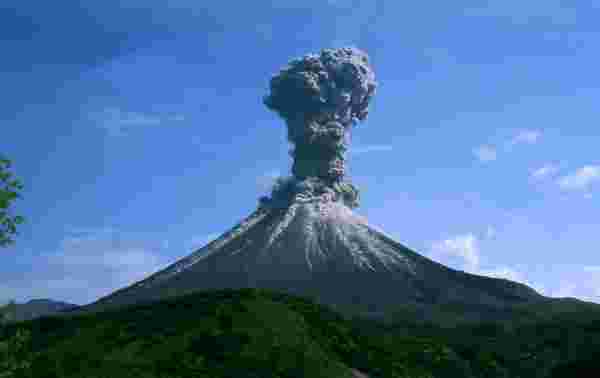
Could solar geoengineering counter global warming?
by The Economist
Global warming is probably the biggest threat facing humanity. If all else fails, could climate-controlling technology be the answer?
This is CRAZY!! Are They Changing The Weather?!
by Coin Bureau
Essential videos suggested by Coin Bureau
Food Plant Disruptions
Laser Cloud Seeding
NASA Cloud Making Machine
Curious Droid Explains HAARP
How To Reverse Climate Change
WEF Great Reset AgendaCharles Hatfield Story
50+ Countries Modifying Weather
Cloud Seeding Effectiveness According To UAE
Bill Gates Wants To Block Out Sun
China Vows Total Control Of Weather By 2035
The Dimming, Full Length Climate Engineering Documentary
by Dane Wigington
GeoeongineeringWatch.org is pleased to announce the release of our groundbreaking documentary that conclusively exposes the existence of global weather intervention operations.
Global weather engineering operations are a reality. Who is responsible for carrying out these programs? What will the consequences be if geoengineering / solar radiation management operations are allowed? THE DIMMING documentary will provide answers to these questions and many more. This is the most complete GeoengineeringWatch.org documentary regarding climate engineering operations. Thank you for viewing and for notifying others of The Dimming film release.
All are needed in the critical battle to wake populations to what is coming, we must make every day count. Share credible data from a credible source, make your voice heard. Awareness raising efforts can be carried out from your own home computer.
These Scientists Are Altering Weather to Fight Droughts | TechnoLogic
by MotherboardCloud seeding has been around for almost a century, touted for its ability to increase rain and snowfall in drought-stricken regions. Governments have spent billions on these weather-modifying projects, despite scant evidence that the technology actually increased precipitation. Now, scientists finally have proof that cloud seeding works. But can weather modification ever escape its controversial reputation?
How China changed the weather to clear skies for Beijing centenary celebration
by FRANCE 24
A new report by Tsinghua University in Beijing has revealed that the Chinese Communist Party used cloud seeding to artificially bring down pollution levels for its centenary celebrations on July 1, 2021. The peer-reviewed study shows just how far has come with this technology. FRANCE 24's Technology Editor Peter O'Brien breaks down how cloud seeding works, and the scale of China's ambitions to change the weather.
How DUBAI Actually Controls its Weather
by The Infographics Show
Wouldn't it be amazing to be able to control the weather? You could give yourself beautiful sunny days whenever you wanted or decide you needed some rain to help water crops for farmlands. Well in today's new video you will learn about the insane and fantastic way Dubai has taken control over the city's weather!
Fine-tuning the climate
by DW DocumentaryEngineers and scientists are trying to intervene in the Earth’s geochemical cycles. Because it appears efforts to cut CO2 won’t suffice to avoid irreversible climate change. But does geoengineering offer a real solution? Or is it just human hubris?
Some scientists believe that we need to explore radical, and perhaps dangerous, technologies in order to be able to lower the earth’s temperature through geoengineering in the near future. Science journalist Ingolf Baur explores the feasibility and risks of leading geoengineering projects. His journey takes him to meet scientists in Switzerland, Iceland, the US and Peru. Along the way, he encounters two very different strategies: One is to fish climate-damaging CO2 from the atmosphere and sink it underground or in the deep sea. The other, and this is the far more controversial strategy, seeks to develop techniques that dim sunlight.
Global warming is causing entire mountain ridges like the Moosfluh above Switzerland’s Aletsch Glacier to break off. Such dramatic changes could increase the pressure to try geoengineering. Its most prominent proponent is David Keith from Harvard University in the US. He’s devised experiments to to sound out the possibilities of "solar geoengineering." His idea is for fleets of aircraft to dump millions of tons of sulfur into the stratosphere every year, where it should reflect part of the incoming sunlight back into space. As audacious as this method seems, it’s actually no different to what happens during volcanic eruptions.
Or could we still manage to get greenhouse gases out of the atmosphere again? In Iceland, a group of researchers is using a special process to filter carbon dioxide from the air and pump it 2,000 meters deep into basalt rock. The surprise: after a few months, the CO2 is already reacting chemically and turning to stone, which renders it harmless - permanently. The quantities are still far too small, but it shows that as controversial and risky as some geoengineering methods may be, in the end we may need technology to avert or at least mitigate the effects of climate collapse.
Futurist Portrait
Mark van Rijmenam
The Digital Speaker
Dr Mark van Rijmenam, CSP, renowned as The Digital Speaker, is a trailblazing strategic futurist and highly sought-after international keynote speaker. His unique ability to simplify intricate concepts and captivate audiences has inspired and enlightened 100,000+ global leaders across more than 25 countries on all continents. In 2023, he was awarded the Certified Speaking Professional and Global Speaking Fellow accreditations.
With a deep understanding of (generative) AI, blockchain, the metaverse, and other emerging technologies, Dr Van Rijmenam is the trusted advisor to leading companies and governments seeking to innovate and thrive in the digital age.
As a distinguished 5-time author and corporate educator, Dr Van Rijmenam is celebrated for his candid, independent, and balanced insights. His engaging and thought-provoking presentations, webinars, workshops, and podcasts empower audiences to embrace the future and stay ahead of the curve in today's rapidly changing digital world.
In his keynote speeches, Dr Van Rijmenam explores the future of work, the role of the metaverse, generative AI, such as ChatGPT, and the importance of data-driven customer-centricity. He emphasises the need for ethical applications of technology and helps organisations build trust while leveraging data for growth and innovation.
The Metaverse - what is it and what does it mean for business and society
by Mark van Rijmenam"In this episode, I explore more of the world I exist in, the Metaverse. Looking into where it was, where it is, and more importantly, where it is going. From virtual real estate and real-life virtual spaces, to battle royal social spaces selling digital fashion, and copyright infringements for Roblox, I aim to look into every corner of this digital world, shining a light on exactly what is going on and taking a closer look at what all of these ones and zeros mean for our public and private lives.
Hopefully, by taking a closer look at this new frontier, we will get a better understanding of what it means for our professional and personal lives and how the metaverse will change our society.
So, what are we waiting for? It is time to start today’s digital download."
Copyright © 2002-2023, Felix Bopp. All rights reserved.


